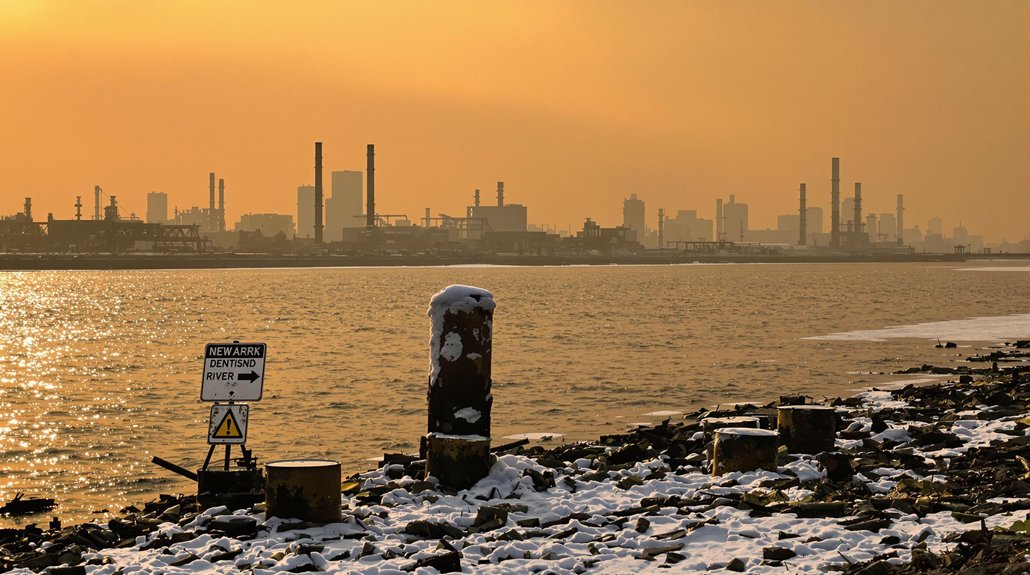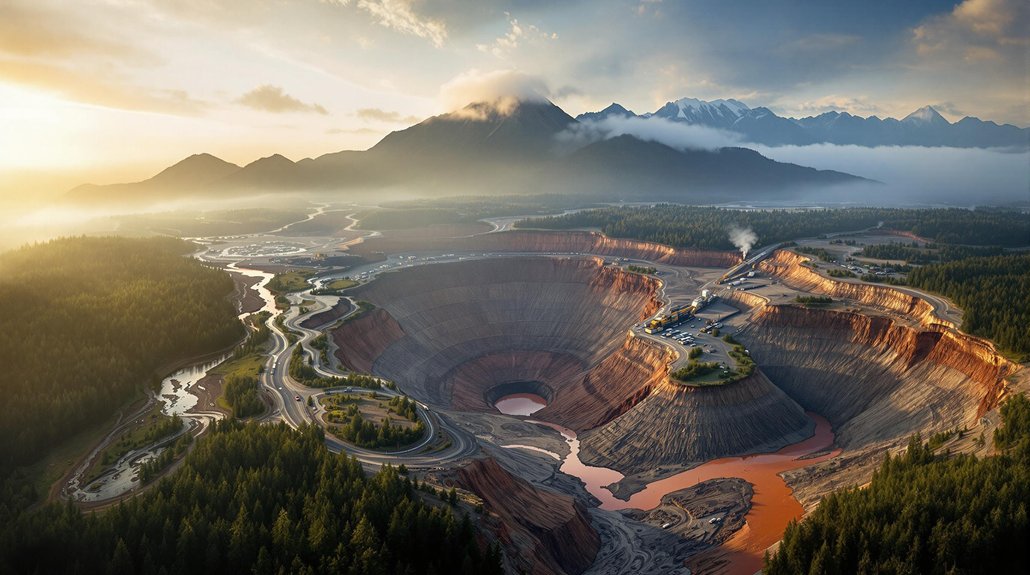How did one of New Jersey’s major waterways become so heavily polluted? The Passaic River‘s troubles began over a century ago when industries flocked to its banks. More than 100 industrial facilities dumped waste into the river, leaving behind a toxic legacy that persists today.
The worst contamination happened in the mid-20th century when companies like Diamond Alkali manufactured pesticides and chemicals along the riverbanks. They produced dangerous substances including DDT and Agent Orange, which released dioxins into the water. This pollution earned part of the river a federal Superfund site designation, marking it as one of America’s most contaminated places.
The toxic legacy of Agent Orange and DDT production transformed the Passaic into a federal Superfund site – a chemical dumping ground for generations.
Today, the river bottom contains a dangerous mix of chemicals. Dioxins, PCBs, mercury, and lead are trapped in the mud, especially in the lower eight miles where about 90% of the contamination sits. These toxins don’t just stay in the sediment – they move into fish and wildlife that live in and around the river. Similar to the mercury contamination from gold mining, these chemicals accumulate in fish and pose serious health risks to humans who consume them.
People living near the Passaic face serious health risks. Communities that catch and eat fish from the river can be exposed to chemicals linked to cancer, immune disorders, and developmental problems. Low-income neighborhoods in Newark have suffered the most, with little say in how industries operated near their homes.
The river itself has been physically changed over time. Since the 1820s, dredging, landfill projects, and engineering work have altered its natural flow. Wetlands that once filtered water and controlled flooding were filled in for urban development. In 1936, Newark’s export of over $100 million in machinery and chemicals significantly worsened the river’s pollution levels. Garbage and sewage dumping further damaged water quality and wildlife habitat.
Local communities have fought back against the pollution. Their protests and advocacy have pushed government agencies to take action. The pollution crisis disproportionately impacts African American communities near the Bay. But cleaning up a century of industrial waste isn’t easy. The toxic legacy of the Passaic River shows what happens when industries prioritize profit over environmental protection, leaving future generations to deal with the consequences.
References
- https://sharepoint.ourpassaic.org/Public Documents/pollution_problems_overview_fact_sheet_english_may_2014.pdf
- https://response.restoration.noaa.gov/about/media/how-do-you-begin-clean-century-pollution-new-jerseys-passaic-river.html
- https://ejhistory.com/change-over-time/
- https://www.eaglehill.us/urban-habitats/Vol 2/Urban Habitats — The Meadowlands Before the Commission Three Centuries of Human Use and Alteration of the Newark and Hackensack Meadows.html
- https://knowingnewark.npl.org/new-chapter-opens-in-life-of-the-passaic/








